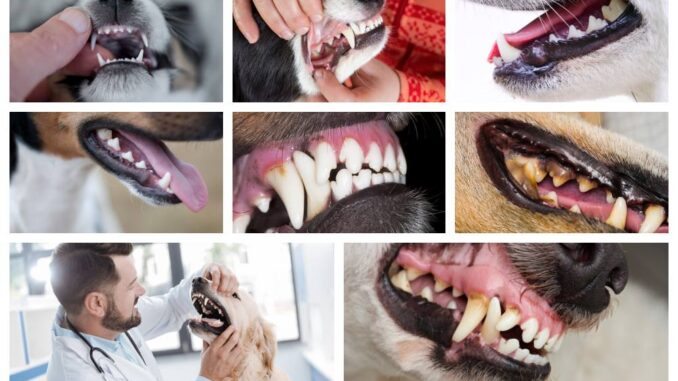
This article was updated on September 7th, 2023
Veterinarians use many physical clues to try to accurately estimate a dog’s age. One common way we do this is to examine is the dog’s teeth. There are many indicators, including the amount, size, and color of teeth that can help us determine how old a pup is.
Pictures of dog teeth by age
3-4 Weeks Old
Deciduous (“baby”) incisors erupt and canines are seen around 3 weeks:
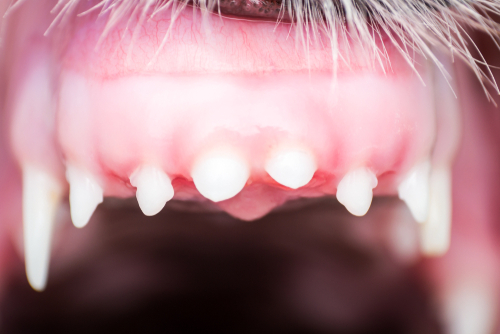
This is the time to begin at-home dental care such as brushing. That way, your pup will get used to the procedure at a young age.
4-12 weeks old
Deciduous premolars erupt at this age. The puppy may experience mild discomfort.
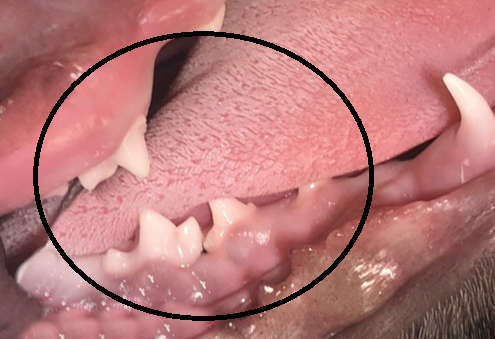
Below is a picture of a 5-week old Jack Russell Terrier puppy:
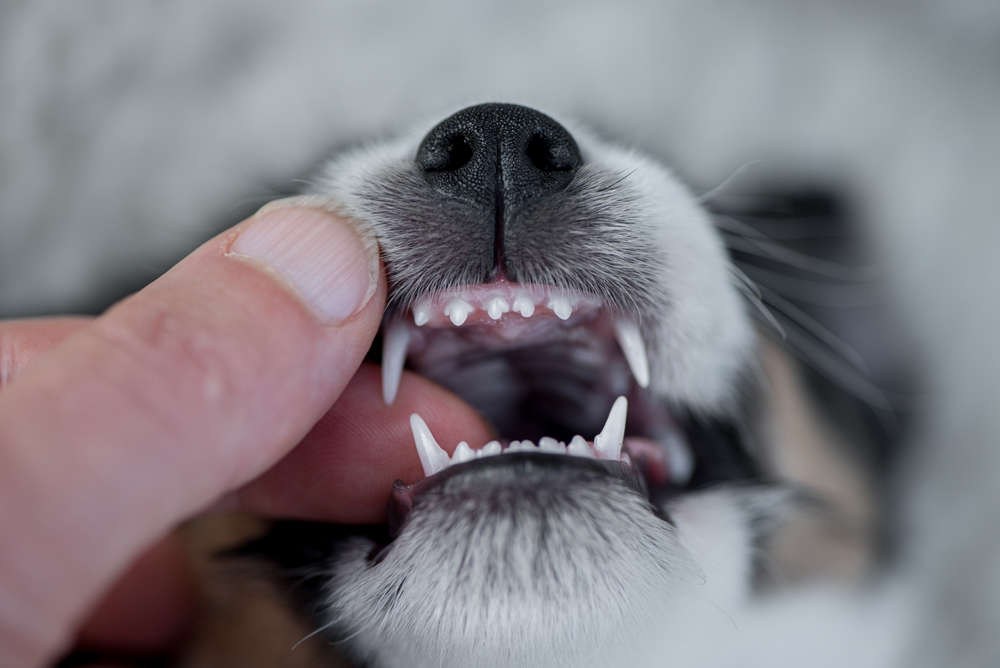
12-16 weeks old
During this time period, adult incisors begin to erupt and push the deciduous ones out. Pet parents may see an increase in chewing behavior and find baby teeth in bedding or food bowls.
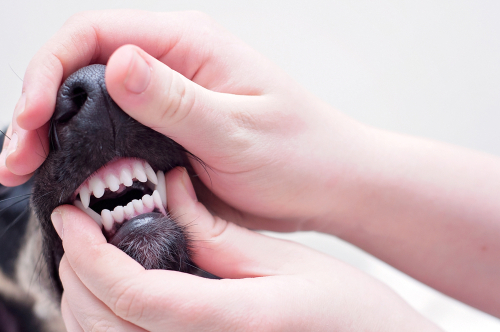
6 months
Adult canine teeth should have fully erupted around the 6 month mark. At this point, you can easily determine a dog’s age by counting back 6 months to their birthdate.
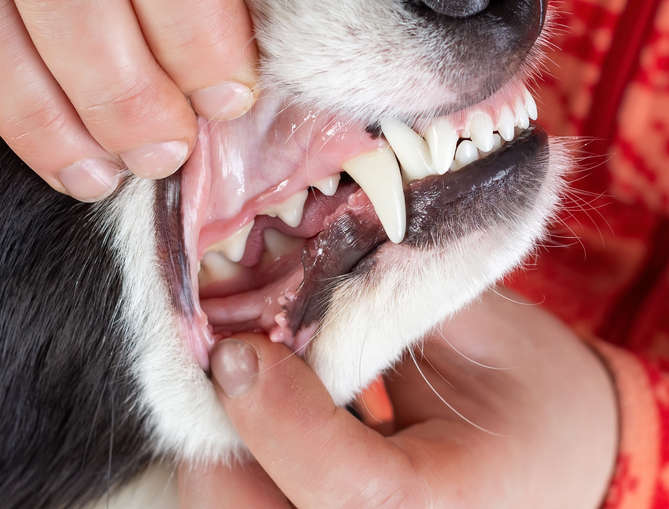
All of the permanent teeth behind the canines (premolars and molars) will erupt at around the 5-7 month mark. This can be a time of intense chewing for a teething puppy.
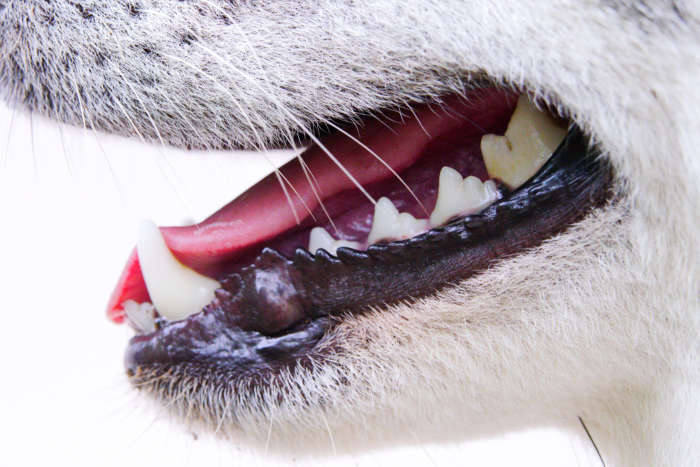
1-year old
All 42 permanent teeth have erupted and should be clean and in good condition. They are at the adult stage at this time.
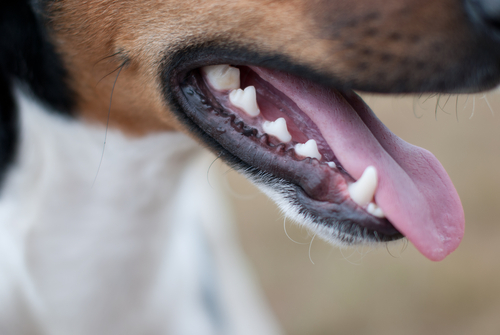
2 to 4 year old
Mild tartar accumulation on the teeth has occurred and you may see mild wear on the surfaces. This is the age to start yearly veterinary dental exams prophylactic cleanings (if needed).
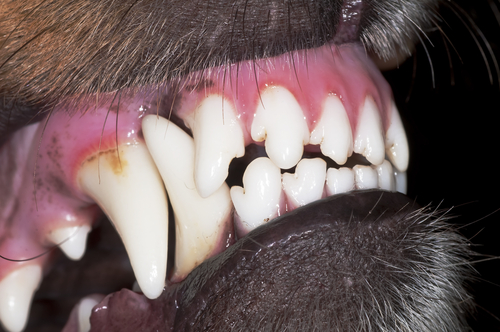
5 to 10 years old
At around 5 years old, tartar accumulation has increased. There may also be gingivitis present, which is a common gum disease that results in redness and swelling of the gums around the base of the teeth. The dog may also have graying of the hair around the muzzle.
According to VCA Hospitals, “Over 80% of dogs over the age of three have active dental disease.” Thus, almost all dogs will require dental care during these years to maintain the health of their teeth.
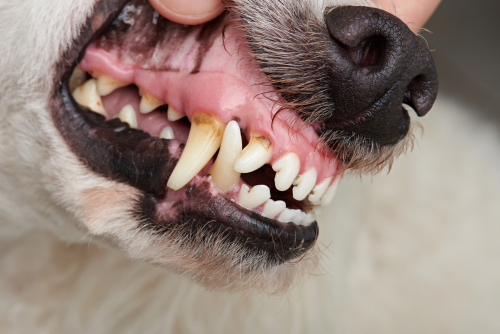
As dogs get closer to the beginning of their senior years (7-10 years), tartar accumulation on the teeth becomes more and more evident with no dental care—as shown in the picture below.
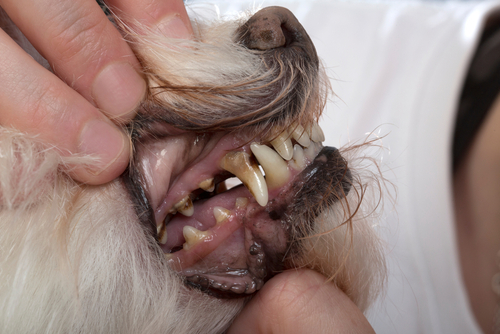
10+ years old
Senior dogs whose teeth have not been professionally cleaned will have even more tartar accumulation, wear, and gingivitis. Teeth will often become painful and sometimes may loosen as the roots are damaged. These dogs often also have graying hair, loss of muscle mass, and cloudy eyes.
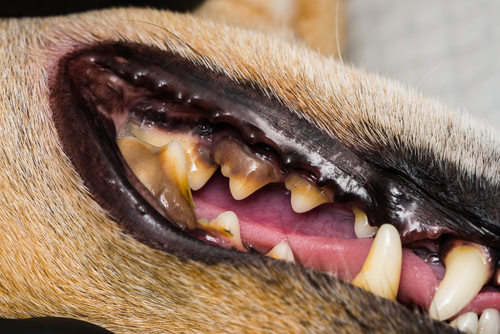
Older dogs whose teeth have not been properly cared for may experience severe dental disease. Dental disease can lead to heart, liver, and kidney failure and must be addressed immediately. It’s especially prominent in smaller dog breeds.
Chart of Dog Teeth by Age: Visual Guide to Teeth Development in Dogs
Our veterinarians have carefully selected images to create a comprehensive chart illustrating the development of dog teeth at various ages.
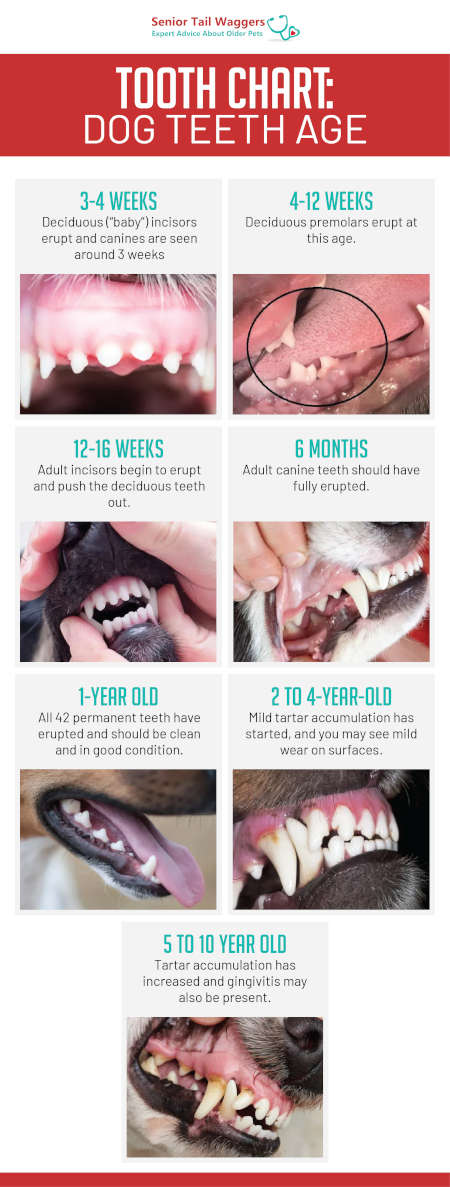
Can you tell a dog’s age by their teeth? how accurate is it?
The answer is yes, you can tell a dog’s age by their teeth BUT only to an extent: at young ages (less than one year) the number and position of teeth that have erupted can pinpoint a dog’s age fairly accurately.
However, it’s different for older dogs. We use the dog’s overall appearance, along with other physical cues (muscling, joint mobility, graying of hair, lenticular sclerosis in the lens, skin elasticity, and breed) to form an opinion.
On the teeth, we observe tartar accumulation, wear, and staining. Though these things can give us some idea as to how old the dog may be, many things can make it difficult, especially if the dog has recently had a dental prophylaxis cleaning.
Related post: Best ways to remove tartar in dogs: read our veterinarian’s article.
Disclaimer: This website's content is not a substitute for veterinary care. Always consult with your veterinarian for healthcare decisions. Read More.


Be the first to comment